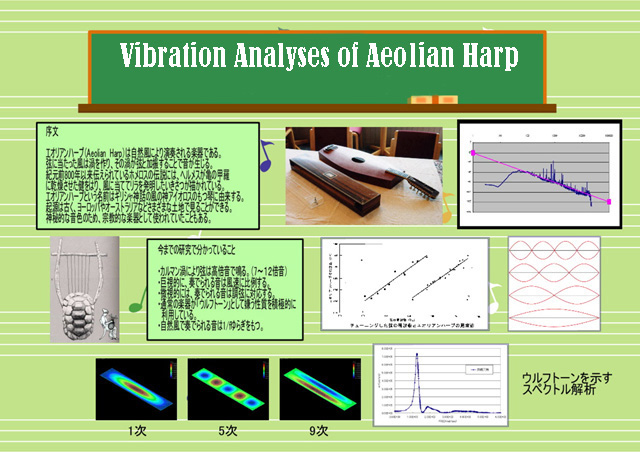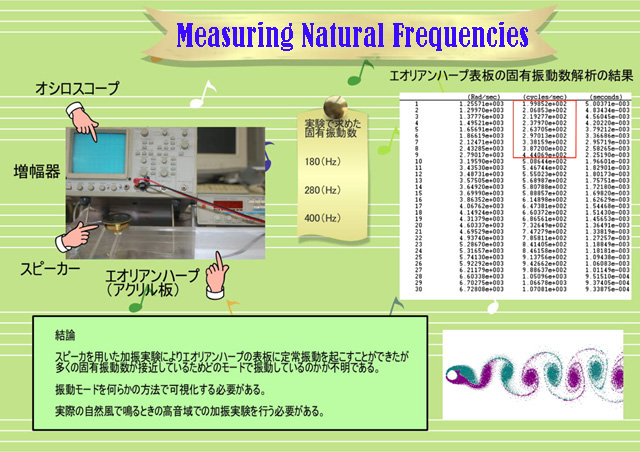
aeolian Harp
What is aeolian Harp?
Å@We have been studying on aeolian harps in cooperation with Ishii Sakae Period Instruments Studio in Ueda City, Nagano Pref. JAPAN. aeolian harps are the music instruments played by the wind.

As shown in the figure above, the sounds created by aeolian harps show perfect agreements with 1/f theory. Strictly speaking, it produces not music but noise, very confortable noise.
They became very popular between 17 and 19 century, and were used to relieve stress and boost the mood of relaxation in the rooms and in the gardens. They were even used for psychotherapy. Now it is very difficult to find a survived one in good condition. Fortunately we can see the real 19 century English aeolian harp at Hamamatsu Museum of Musical Instruments in Shizuoka Pref. Japan. Mr. Sakae Ishii reproduced a replica by studying it closely. You can also find a lot of information about aeolian harps on the web. And they say that,the tune of the aeolian harps will not affected by the tension of the cord (or string) but by the wind speed and the thickness of the cord.
Can you believe that?
Å@The above figure will explain the mystery. The source of the sound produced by aeolian harps is Karman vortex street. It is responsible for such phenomena as the whirring of suspended telephone or power lines, and the vibration of a car antenna at certain speeds. In the case of the telephone line and car antenna, it is the air that is making the sounds, while in the case of aeolian harps, vibrating cords are emitting the sounds. The frequency of the Karman vortex street is determined by the wind speed v and the diameter of the cord d using the next experimental formula,
f=v/(5d).
So, is that all about aeolian harps? No! Usually aeolian harps have long bodies with long cords. Ordinary wind can make higher than 10th harmonic sounds. An aeolian harps will spontaneously determine which harmonic sound most match the frequency of the Karman vortex and begins to sing at that tune. So the sound from an aeolian harp changes its tune discretely if the tension of the string is constant. See the above figure which shows saw tooth like shape. Microscopically, the tension of the string and the tune is proportional, but macroscopically, range of the tune from the string is very limited and narrow. That makes the sound from harp seem constant regardless of the tension (tuning) of the string.

Å@Furthermore we found another interesting characteristics of aeolian harps from the numerical analyses. The ordinary musical instruments are designed to avoid "wolf tones" which is a tendency to resonate strongly with a certain tune. But in the case of aeolian harps, typical rectangular shape can easily have wolf tones because to have a wide range of natural frequencies, they must have nodes along the lateral direction of the body. Yes, they are not only ignoring to avoid wolf tones but positively making use of it.



